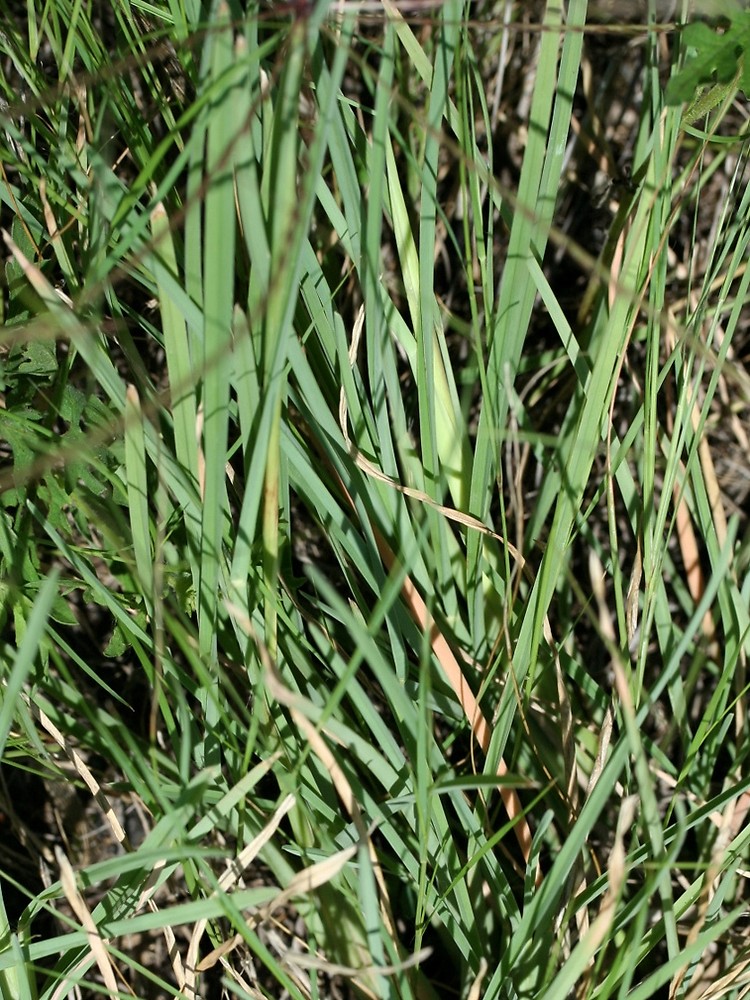Tumble Windmill Grass
(Chloris verticillata)

Description
Grass Family (Poaceae). Tumble windmill grass is a native, warmseason, perennial bunch grass. The height ranges from 4 to 12 inches. The leaf blade is crowded at the base, 3 to 7 inches long, tightly folded, abruptly pointed, and light green. The leaf sheath is shorter than the internodes, compressed, and flattened. The stem is erect or decumbent and sometimes roots at the lower nodes. The seedhead has 7 to 10 slender spikes, 2 to 6 inches long, arranged in 1 to 3 whorls, finally widely spreading, and each spikelet is tipped with a short awn. If grazed during dormancy, supplement with protein and mineral concentrates. Its quality is moderately high, but production is low. It is not a choice forage plant, but is important as an indicator of fair to poor range condition. This grass is seldom, if ever, a key management species. When it is, it responds to proper grazing use and deferred grazing periods of 50 to 60 days. Growth starts in spring and it becomes dormant in the fall. It may produce two seed crops during the growing season, the first from May to July and then the second in September. The seedheads break off at maturity and tumble in the wind. It is adapted to a wide range of soils, though it is best adapted to acid to neutral medium and coarsetextured soils.
Taxonomic tree:







